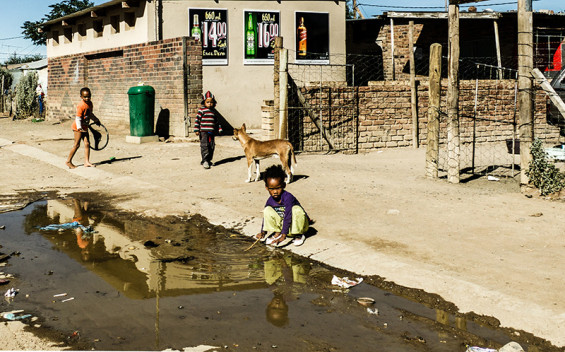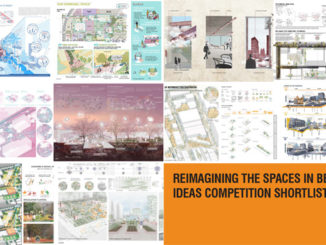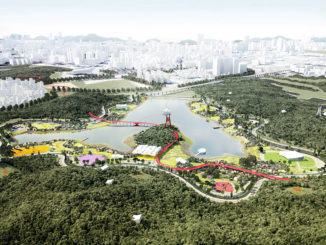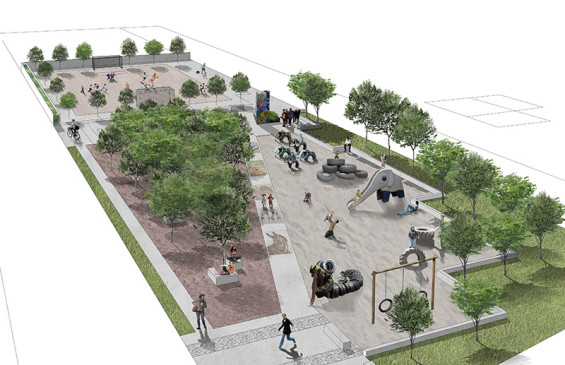
The client brief called for three principal focuses: the creation of employment opportunities, capacity building or skills development, and maximising the socio and economic impact of the project at the local level. Budgetary and resource limitations coupled with intense local politics resulted in a very challenging environment for design and implementation decisions.
In an effort to maximise the impact of the project on the local community and to really understand the context in terms of local needs, social issues and available skills resulted in an extensive and protracted consultation process. Amongst others this process included a “Dream parks” competition for school children that resulted in significant insight into their social problems and needs as well as their perceptions of the environment.
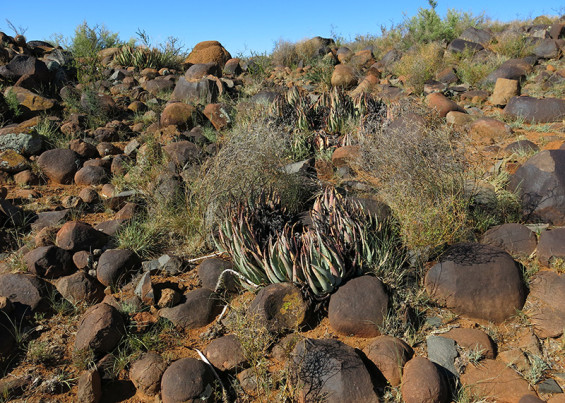
Design philosophy
The first point of departure for the design was purely functional and a direct response to the environment, existing site and pedestrian movement corridors between the residential area and the business districts. Simplicity and robustness were considered critical considering that all construction will be by unskilled local labour sourced from the communities. During the schools competition it became evident that the local understanding of of the area, ecology and environment is very basic. This presents an opportunity to tell the story of the local environment in a fun and playful manner by incorporating a narrative along the pathways, and designing the play area as a board game. We hope that the project will prompt the inquisitive nature of the children and educate them in a fun and informative way about their own environment.
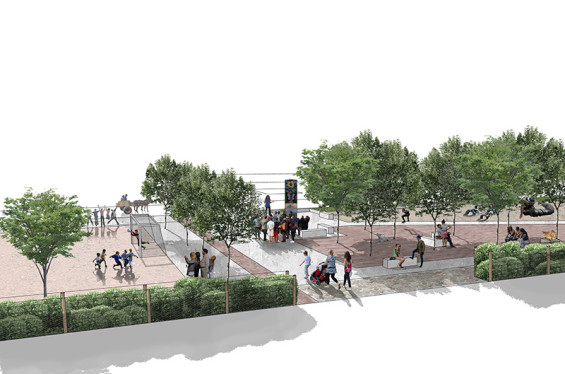
The park in Hopetown will focus on telling the story of the formation of the Karoo and the associated fossil record, whilst the park in Strydenburg, a setting with almost no potable water, will focus on ecological adaptation of plants, animals and people to the semi-desert environment
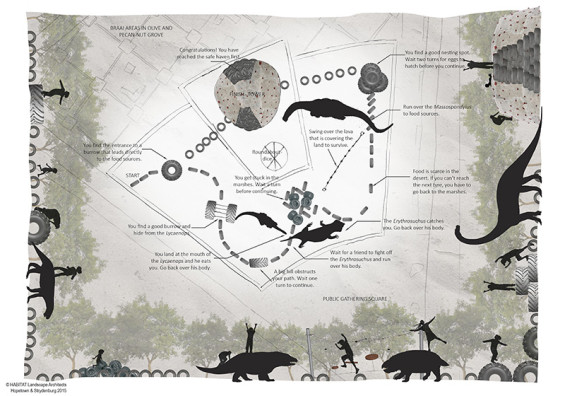
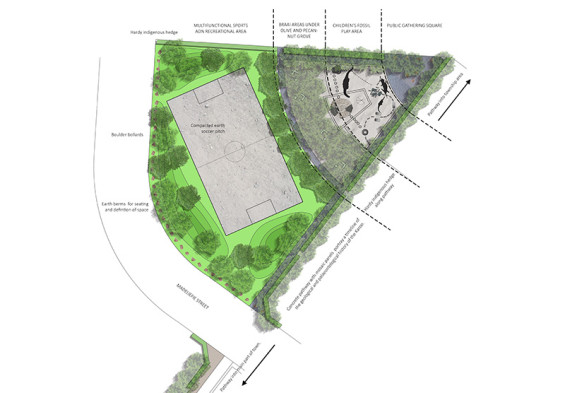
Material strategy
As far as possible all materials had to be locally sourced and be be extremely robust to limit vandalism. Sourcing materials in the local area proved more challenging than anticipated, and forced multiple reiterative design cycles and creative local solutions.
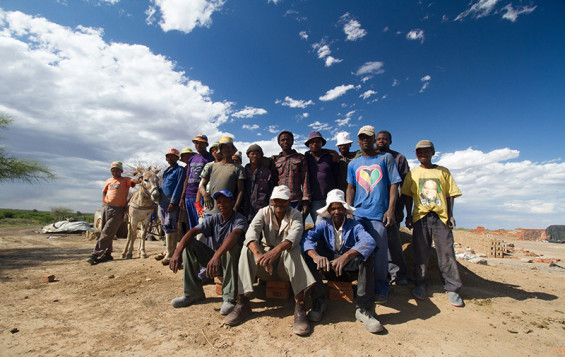
The final designs in both parks respond to the principal movement patterns that the community follow between their homes and the local business district. The active and passive recreational spaces are articulated along these movement spines. Elements of colour and form interject into the pathways and draw the pedestrians into the various spaces.
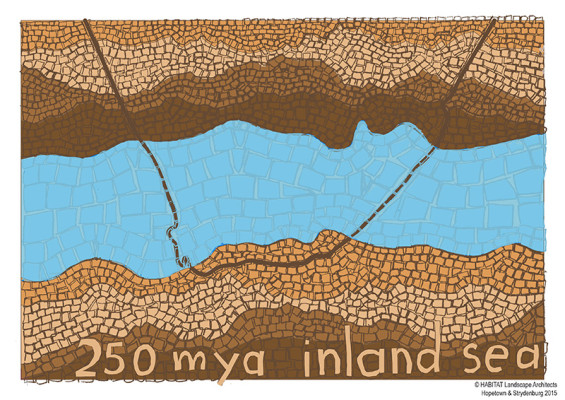
The pathways tell the geological and paleontological history of the Karoo in panels, showing important events in mosaic. Mosaics are one of the few materials that will last with the prevalent vandalism, heavy foot traffic and extreme weather conditions. It will also bring colour into an otherwise extremely dull environment.
The planting strategy deviates from the usual indigenous only policy, using olive and pecan nut trees to provide something edible in the park. Hardy shrubs (protected from wandering goats between two wire mesh fences) define the park edges.
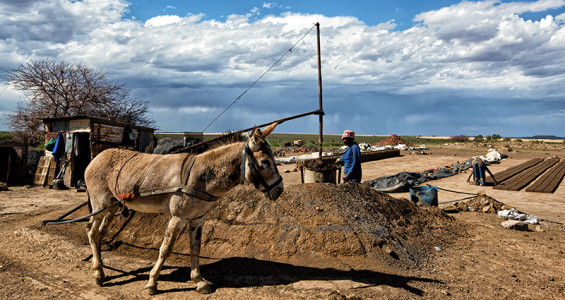
All bricks are sourced from local clay brick-makers who still use age old technology to manufacture clay bricks. Recycled tyres are used extensively in the playground. They are freely available, cost-effective, need very little maintenance, and are undesirable to steal. The playground centres on a game of “snakes and ladders”, situated in the prehistoric times of the Karoo. An information board explains the game, but all play elements allow for open-ended games, focusing on creating routes and destinations in the playground.
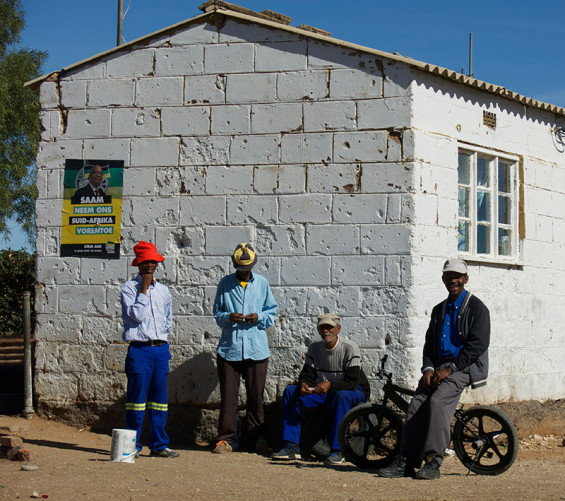
Background
The National Department of Environmental Affairs administrates Expanded Public Works Programmes (EPWP). These programmes aim to alleviate poverty and unemployment in the country. It is an important avenue for labour absorption and income transfers to poor households. EPWP projects provide short-term and long-term work opportunities and training to unemployed and unskilled individuals. Training is an important element to increase the future employability of participants.
Hopetown and Strydenburg are two small rural settlements in the heart of the Karoo situated approximately half way between Cape Town and Johannesburg. The project falls within the Northern Cape Province, one of the largest and poorest provinces in South Africa. Despite the proximity to one of the largest rivers in the country the area is extremely arid, the local economy dwindling and the unemployment rate 80%. There are virtually no recreational facilities in the towns.
Recreational Parks in both Hopetown and Strydenburg
Location | Hopetown & Strydenburg, Northern Cape, South Africa
Client | Department of Environmental Affairs
Design Firm | Habitat Landscape Architects
Landscape Contractor | Habitat Landscape Architects
Photographs and drawings by Habitat Landscape Architects

